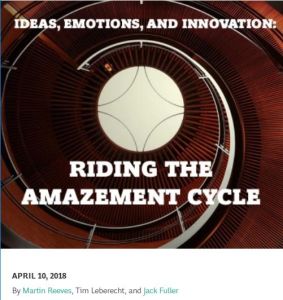Join getAbstract to access the summary!

Join getAbstract to access the summary!
Martin Reeves, Tim Leberecht and Jack Fuller
Ideas, Emotions, and Innovation
Riding the Amazement Cycle
Boston Consulting Group, 2018
What's inside?
Have you ever been amazed? Learn how this awe-inspired state can help your team embrace novelty.
Recommendation
The current dizzying speed of change and innovation led TED to run its 2018 conference under the title, “The Age of Amazement.” Yet amazement isn’t just an emotional state but a complex journey – a process that individuals and organizations must navigate constantly. In this short article, Martin Reeves, Tim Leberecht, and Jack Fuller of the Boston Consulting Group’s Henderson Institute describe what the “Amazement Cycle” entails and explore how organizations can use it to promote innovation. getAbstract recommends their analysis to leaders at all organizational levels.
Summary
About the Authors
Martin Reeves, Tim Leberecht and Jack Fuller are fellows at the Boston Consulting Group’s internal think tank, the Henderson Institute.












































Comment on this summary